1.The Dust of Snow
- Books Name
- First Flight and Foot prints
- Publication
- ACERISE INDIA
- Course
- CBSE Class 10
- Subject
- English
Poem-1
Dust of Snow
By Robert Frost
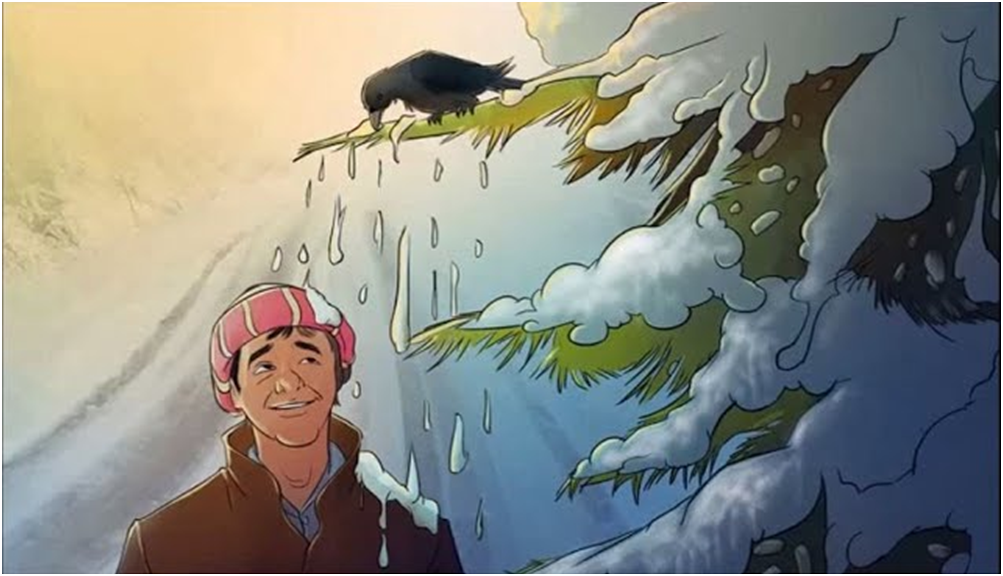
Dust of Snow Poem Introduction
Robert Frost's poem "Dust of Snow" is a simple and short poem with a deeper and larger meaning. The poet explains how something as insignificant as getting snow on one's body can brighten one's day. Robert Frost expresses the poem's message in these words:
“Always, always a larger significance…
A little thing touches a larger thing.”
Dust of Snow Poem Summary
Robert Frost's short poem sheds light on the unimaginable healing power of nature and small things. There is nothing that nature cannot cure, from a bad mood to illness. On one of these bad days, a crow's movement near a hemlock tree dusted snow on the author. The snow immediately makes him happy. His day improves dramatically. As a result, the supremacy of nature as a whole made him realise how insignificant his problem was. The fact that the hemlock tree is poisonous combined with the crow being a symbol of doom and fear, is used ironically in the poem as the carriers of happiness in the narrator's life.
The poet has attempted to demonstrate through these objects that creatures associated with negative aspects of life can sometimes be the source of change and happiness. Being outside in nature, with all of its unpredictability, can benefit anyone, at any time, anywhere.
Dust of Snow Poem Explanation
The way a crow
Shook down on me
The dust of snow
From a hemlock tree
- Shook- shake
- Hemlock- a poisonous tree with small white flowers
The poem is set in a scene in which the poet is depressed and walking by a tree, a hemlock tree. The hemlock tree is poisonous. A crow happens to throw snow dust on him as he passes by. It is unclear whether it falls on his head or shoulders because there is no mention of this in the poem. Furthermore, the readers are left in the dark about the bird's specific action. Whether the crow was landing, shivering from the cold, readjusting itself on the branch, or taking off, it dropped some snow on the author. The two natural agents, the hemlock tree and the crow, represent sadness and gloom in this scene, just as the poet's mood was in the opening scene.
Has given my heart
A change of mood
And saved some part
Of a day I had rued.
- Rued- held in regret
The author was having a bad day for unknown reasons. But the snow falling on his head instantly brightened his mood. He had already had a bad day, but the crow and the hemlock tree saved the rest of it. Generally, the hemlock tree and the crow are used for negative references, but the poet used them beautifully to show that even the most unlucky things can bring joy and happiness. One should not take anything for granted and should be open to whatever way nature chooses to bless us.
Dust of Snow Poem Literary Devices
1. Rhyme Scheme- abab cdcd
2. Alliteration- the occurrence of the same letter or sound at the beginning of adjacent or closely connected words.
The instances of alliteration are as follows-
1. Has given my heart
2. And saved some part
1. inversion – when the structure of a sentence is changed by the poet to create rhyme, this poetic license is called inversion. In stanza 1, inversion can be seen.
2. assonance – the prominence of a vowel sound throughout a line is called assonance. In stanza 1, line 2 – “Shook down on me” – ‘o’ sound is prominent.
3. enjambment – when the same sentence continues to the next line without the use of any punctuation marks, it is called enjambment. It has been used thorughout the poem.
About the Author
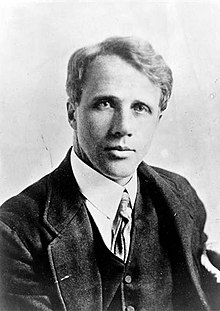
Robert Frost is a well-known poet from the United States. He possessed a strong command of American colloquial speech and created realistic depictions of early rural life. His great work in poetry mostly depicted rural life in New England in the early twentieth century. He used poetry to investigate complex philosophical and social issues. Individuals honoured and frequently quoted him for his work throughout his life, and he also received four Pulitzer Prizes.
1.The Dust of Snow
- Books Name
- Online English tutor English Book
- Publication
- Online English tutor
- Course
- CBSE Class 10
- Subject
- English
Dust of Snow
By Robert Frost
Introduction
The poem “Dust of Snow” by Robert Frost illustrates a deeper sense. It explains how little and unimportant things can make our day happy.
Robert Frost (1874–1963) was an American poet who depicted realistic New England life through language and situations familiar to the common man. He won four Pulitzer Prizes for his work and spoke at John F. Kennedy's 1961 inauguration. Famous works include “Fire and Ice,” “Mending Wall,” “Birches,” “Out Out,” “Nothing Gold Can Stay” and “Home Burial.” His 1916 poem, "The Road Not Taken,"
Theme
In the poem "The Dust of Snow" Robert Frost talks about the importance of small things in our lives. These unexpected things happen in life and they bring their own effects and impacts. Even things of bad omen can be the reasons behind causing good things in your life. The poem shows the healing nature of the nature. The poet goes against the established traditional followings and sayings by depicting the symbols of bad omen crow and the hemlock tree as the reasons behind bringing a change of mood of the poet from gloom and hopelessness to optimism
Explanation
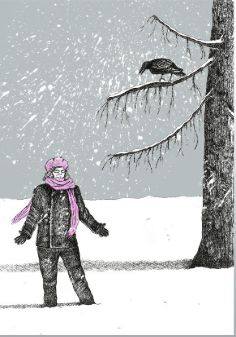
The way a crow
Shook down on me
The dust of snow
From a hemlock tree
Word meanings
Shook- shake
Hemlock- a poisonous tree with small white flowers
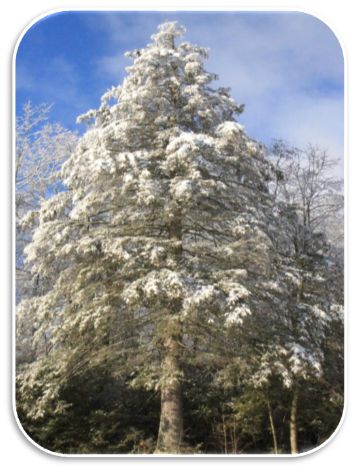
The poem sets in woods where the poet walking by a tree is in a bad mood and is walking by a tree, a hemlock tree, a poisonous one considered bad for luck . Suddenly a crow shooked as a result a dust of snow fell upon him.
Has given my heart
A change of mood
And saved some part
Of a day I had rued.
Rued- held in regret
The author was not in a good mood but the falling of the snow on his head lifted his mood instantly. Thus, rest of it was saved by the crow and the hemlock tree.
Generally, hemlock tree and crow are considered a carrier of bad luck but in this poem they are used as a mean of happiness and joy. The poet has portrayed the power of nature which can make anyone free from tension with its little and simple things.
Dust of Snow Literary Devices
- Rhyme Scheme- abab cdcd
- Alliteration- the occurrence of the same letter or sound at the beginning of adjacent or closely connected words.
The instances of alliteration are as follows-
- Has given my heart
- And saved some part
- inversion – when the structure of a sentence is changed by the poet to create rhyme, this poetic license is called inversion. In stanza 1, inversion can be seen.
- assonance – the prominence of a vowel sound throughout a line is called assonance. In stanza 1, line 2 – “Shook down on me” – ‘o’ sound is prominent.
- enjambment – when the same sentence continues to the next line without the use of any punctuation marks, it is called enjambment. It has been used throughout the poem.
Dust of Snow Summary
The short poem by Robert Frost depicts the incredible healing power of nature through its tiny things.
It’s beauty of the smallest thing that provide instant energy and can soothe our mind to get free from sorrow and grief.
The poem starts with poet saying that he had a bad experience since morning .
While he was passing through woods,
He happened to cross the path by hemlock tree ( considered as a carrier of bad luck) when suddenly due to the movement of the crow snow dust from the tree fell upon him.
The beauty of snow dust gave him instant joy that he forgot all his worries and sorrows.
In this way the rest part of his day got saved from getting sad .
Thus, he realised the power of nature and how petty his problem was.
The fact that hemlock tree is poisonous combined with crow being the indicator of doom and fear are used in the poem as the carriers of happiness in the life of narrator is ironical.
Through this poem the poet has also tried to depicts that the creature which are considered
Carriers of doom can bring joy.
It is just prejudice through which we
Believe something bad and relate them with bad luck.
Dust of Snow Question Answers
Q1. What is a “dust of snow”? What does the poet say has changed his mood? How has the poet’s mood changed?
Answer. The tiny particles of snow that resembles as dust together is called dust of snow.
The poet was in gloomy mood since the very beginning of the day. In his sorrow and dismay he was passing by the hemlock trees in woods, where suddenly due to the movement of the crow the dust fell on him and he got delighted with the beauty of snow dust.
In this way his mood got changed.
Q 2. How does Frost present nature in this poem? The following questions may help you to think of an answer.
(i) What are the birds that are usually named in poems? Do you think a crow is often mentioned in poems? What images come to your mind when you think of a crow?
Answer. Birds like sparrow, nightingale and peacock are more than often named in poems. Unlike these birds, crows are often seen as the indicators of doom and fear. They are often used for negative references.
(ii) Again, what is “a hemlock tree”? Why doesn’t the poet write about a more ‘beautiful’ tree such as a maple, or an oak, or a pine?
Answer. The poet has used hemlock tree to illustrate that those entities which are used for negative references and Believed to be a carrier of bad luck may also bring out joy in life.
Hemlock is considered as a source of badluck as it is poisonous. However, in the it has become the mean of joy for poet.
(iii) What do the ‘crow’ and ‘hemlock’ represent — joy or sorrow? What does the dust of snow that the crow shakes off a hemlock tree stand for?
Answer. Crow and the hemlock tree represent sorrow. However, they both have changed the mood of poet from sorrow to joy. Through this poem, the poet wants to change the preconceived notions about some typical things, that are just based upon thoughts.
The dust of snow stands for joy
2.Fire And Ice
- Books Name
- First Flight and Foot prints
- Publication
- ACERISE INDIA
- Course
- CBSE Class 10
- Subject
- English
Poem-2
Fire and Ice
By Robert Frost

Fire and Ice Poem Introduction
The poem "Fire and Ice" by Robert Frost expresses the profound idea that the world would end in one of two ways: by ice or by fire. Both components are likened to self-destructive human emotions: hatred and desire. The poem, in a very artistic way, underpins the philosophy that we let our emotions rule us, and if we don't control them, they will inevitably destroy everything around us. Similarly, he believes that fire and ice are equally capable of bringing the world to an end.
Fire and Ice Poem Summary
Robert Frost's poem "Fire and Ice" is a powerful symbolic poem in which fire represents desire and ice represents hatred. He used the concept of two groups, each of which has their own possible explanation for the end of the world. One believes that fire alone can destroy all forms of life on Earth, whereas the other believes that if ice could cover the earth's surface as a result of extremely low temperatures, it would result in the end of the world. Both components are compared to self-destructive human emotions such as desire and hatred.
The poet is of the opinion that he has been very closely associated with "fiery desires," which he believes are capable of bringing human beings to the brink of destruction. As a result, he regards fire as more capable of annihilation. But then he realises that "icy hatred" is just as capable of destroying humans, albeit more slowly and steadily. As a result, if the Earth were to end twice, ice would be just as good as fire. Whereas a fire would cause immediate destruction, ice would cause silent damage. Similarly, if fire is pure emotion, ice is pure reason.
Thus, the poem, in a very artistic way, underpins the philosophy that we let our emotions rule us, and if we don't control them, they will undoubtedly bring us all to the verge.
Fire and Ice Poem Explanation
Some say the world will end in fire
Some say in ice.
From what I’ve tasted of desire
I hold with those who favour fire.
- Desire- a strong feeling of wanting to have something or wishing for something to happen
- Favour- approval, support
The poem expresses the profound idea that the world will end in one of two ways: ice or fire. One school of thought holds that the Earth's core will one day become so hot that it will erupt in fire, destroying the planet's surface. The second group, on the other hand, claims that if the temperature drops to the point where life on Earth becomes impossible, the same catastrophic effects will occur. The poet then compares fire and ice to the destructive qualities of human emotions such as desire and hatred. He claims that based on what he knows about "fiery desires," he would side with those who claim it would be fire. By saying so, he conveys the idea that humans allow their emotions to rule them, and the result of uncontrolled longing is chaos.
But if it had to perish twice,
I think I know enough of hate
To say that for destruction ice
Is also great
And would suffice.
- Perish- die
- Suffice- be sufficient
Then, instead of dismissing the first option of fire, he considers that if the world must end twice, ice would be equally capable of doing so. He draws a distinction between "ice" and "hatred." The human capacity for insensitivity and hatred has the potential to destroy one's soul. Though slow and steady, it has the same effect on us as desire. So, if given the choice between fire and ice, ice would be just as effective as fire in destroying the world.
Fire and Ice Poem Literary Devices
1. Rhyming scheme- Aba
abc
bcb
2. Assonance- it is repetition of vowel sounds in same line. The repetition is at different places in different words.
Example- The long sound of “o” in “I hold with those who favour fire”
3. Alliteration- alliteration is the repetition of a consonant sound at the start of two or more closely placed words.
Example- The sound of “f” in “favour fire”, “w” in “world will”
4. Imagery- Imagery is used to make readers perceive things involving their five senses. Example- “Some say the world will end in fire”
“To say that for destruction ice Is also great”
5. Anaphora- the repetition of a word or expression at the start of two or more consecutive lines.
Example – “Some say” is repeated at the start of lines 1 and 2.
6. Personification- Personification is to give human qualities to inanimate objects. In this poem, “fire” and “ice” are capable of destruction. Thus, the poet personifies fire and ice by giving them mind and power to destroy anything.
7. Enjambment- it is defined as the thought or clause that does not come to an end at a line break, rather it moves over to the next line.
Example- “From what I’ve tasted of desire
I hold with those who favor fire”
About the Author
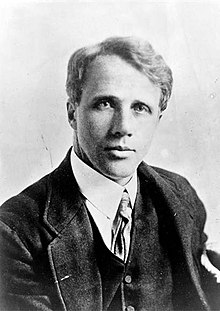
Robert Frost is a well-known poet from the United States. He possessed a strong command of American colloquial speech and created realistic depictions of early rural life. His great work in poetry mostly depicted rural life in New England in the early twentieth century. He used poetry to investigate complex philosophical and social issues. Individuals honoured and frequently quoted him for his work throughout his life, and he also received four Pulitzer Prizes.
2.Fire And Ice
- Books Name
- Online English tutor English Book
- Publication
- Online English tutor
- Course
- CBSE Class 10
- Subject
- English
Fire and ice
By Robert Frost
Summary
In this poem “Fire and Ice” Robert Frost has used fire and ice as a symbol of human emotion of desire and hatred.
He has illustrated the notion of two groups towards the cause of the destruction of whole world.
According to the one opinion that fire alone can destroy each and every possibility of life on Earth while the other thinks that if ice as a result of extremely low temperatures could cover the earth’s surface, it would lead to the end of the world.
Both the components has been compared with self-destructing human emotions: desire and hatred.
Initially, the poet favours the opinion that is associated with the fire or “fiery desires” and considers it is more capable of bringing human beings on the verge of destruction.
However, further in the poem he thinks that ice or hatred is equally capable of ruining humans, though slowly and steadily.
Therefore, if Earth was to end twice, ice would be just as good as fire.
Thus, the poet has put forth his philosophy that uncontrolled emotions whether it is hatred or passions desire would equally lead us to chaos just as fire and ice can bring earth on the verge of destruction.
Explanation

Some say the world will end in fire
Some say in ice.
From what I’ve tasted of desire
I hold with those who favour fire.
Word meanings
- Desire- a strong feeling of wanting to have something or wishing for something to happen
- Favour- approval, support
The poet depicts general idea that there are two ways, fire and ice through which the whole world could end.
According to the opinion of some people fire would be the reason of destruction if the earth’s core would get that much heated up that the surface would set in fire. However, according to the perception of others, due to excessive cold the environment would become too harsh to survive that one day life on Earth would become impossible.
The poet then compares fire and ice with the destructive features of human emotions; desire and hatred.
He says that he favours those who says that fire would end the earth as uncontrolled and unending desires would certainly be a cause of destruction of earth one day.
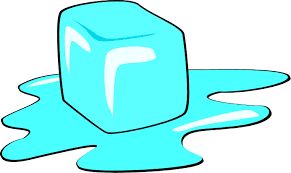
But if it had to perish twice,
I think I know enough of hate
To say that for destruction ice
Is also great
And would suffice.
Word meanings
- Perish- die
- Suffice- be sufficient
Then by being firm with the first option of fire, he considers if the world has to destroy twice, ice would be equally destructive in ending the earth.
He compares “ice” as “hatred” in terms of human disconcert and insensitivity that has the potential for inner destruction. Hatred, Though slow and steady, has the same effect that desire has on us. So if given an option between fire and ice, ice would be just as good as fire to destroy the world.
Literary devices
1.Assonance- it is repetition of vowel sounds in same line. The repetition is at different places in different words.
Example- The long sound of “o” in “I hold with those who favour fire”
2. Alliteration- alliteration is the repetition of a consonant sound at the start of two or more closely placed words.
Example- The sound of “f” in “favour fire”, “w” in “world will”
3. Imagery- Imagery is used to make readers perceive things involving their five senses. Example- “Some say the world will end in fire”
“To say that for destruction ice Is also great”
4. Anaphora- the repetition of a word or expression at the start of two or more consecutive lines.
Example – “Some say” is repeated at the start of lines 1 and 2.
5. Personification- Personification is to give human qualities to inanimate objects. In this poem, “fire” and “ice” are capable of destruction. Thus, the poet personifies fire and ice by giving them mind and power to destroy anything.
6. Enjambment- it is defined as the thought or clause that does not come to an end at a line break, rather it moves over to the next line.
Example- “From what I’ve tasted of desire
I hold with those who favor fire”
Fire and Ice Question Answers
1. There are many ideas about how the world will ‘end’. Do you think the world will end some day? Have you ever thought what would happen if the sun got so hot that it ‘burst’, or grew colder and colder?
Answer. Unfortunately, the world is going to end one day and there is nothing we can do about it. There are many ideas as to how it will end but one can’t say surely. The reason that life exists only on Earth is that the circumstances and temperature is apt to make it possible. If the sun gets so hot one day that it is at the verge of bursting, it would lead to rapid destruction as there would be fire everywhere. Conversely, if it grows colder and colder, there will be ice everywhere on Earth and life in any form would not be able to sustain at such low temperatures.
2. For Frost, what do ‘fire’ and ‘ice’ stand for?
Here are some ideas:
- greed
- avarice
- cruelty
- lust
- conflict
- fury
- intolerance
- rigidity
- insensitivity
- coldness
- indifference
- hatred
Answer. According to Frost, ‘fire’ stands for greed, conflict, fury, cruelty, lust and avarice whereas ‘Ice’ stands for insensitivity, coldness, intolerance, indifference, rigidity and hatred.
3. What is the rhyme scheme of the poem? How does it help in bringing out the contrasting ideas in the poem?
Answer. The rhyme scheme of the poem is “aba abc bcb”. The poet has used the rhyming beautifully to bring about contrasting ideas in the poem. He has used the ideas of two groups who believe that the world would come to a catastrophic end either as a result of fire or ice. Simultaneously, he portrays these two essential components as features of destructive human emotions: desire and hatred. Just like fiery desires and icy hatred can cause damage to an individual in an irreparable manner, fire and ice can lead the world at the verge of chaos and thus, apocalypse.
3.A Tiger in The Zoo
- Books Name
- First Flight and Foot prints
- Publication
- ACERISE INDIA
- Course
- CBSE Class 10
- Subject
- English
Poem-3
A Tiger in the Zoo
By Leslie Norris
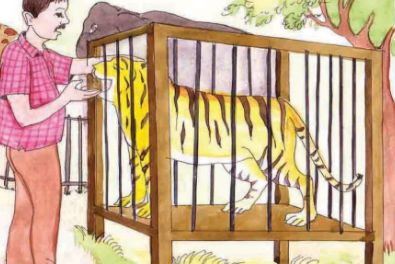
A Tiger in the Zoo Poem Introduction
Leslie Norris' poem describes the agony and helplessness of a caged tiger living in a zoo. The poet describes what his life would have been like if he had been a free animal. The poet attempted to explain the plight of animals caged by humans for their own amusement.
A Tiger in the Zoo Poem Summary
The poem begins with a description of a very beautiful tiger walking in his small cage. He has lovely stripes on his skin and velvety soft paws. The tiger, on the other hand, is dissatisfied and enraged at being confined in the cage. According to the poet, if the tiger had not been confined to the zoo cage, he would have been hiding behind the long grass near a body of water in order to catch its prey, the deer. He would also have terrorised the residents of the villages surrounding the forest. The reality, however, is quite the opposite.
He was imprisoned in a cage made of strong building materials, and he was helpless inside. He couldn't demonstrate his power to the visitors, so he never tried to terrorise them. The poet describes the tiger as powerless and in agony. He claims that he is alone at night as well, hearing the voices of police patrol vehicles and gazing at the stars. The tiger's personality has been completely altered by his confinement. The poet is attempting to convey the message that the animal, which is known for its fearlessness and freedom, is confined and sad as a result of human beings who seek pleasure from looking at him in the zoo cage.
A Tiger in the Zoo Lesson Explanation
He stalks in his vivid stripes
The few steps of his cage,
On pads of velvet quiet,
In his quiet rage.
- Stalks: follows
- Vivid: bright colored
- Pads: paws of tiger
- Rage: anger
The poet says here that the tiger in the zoo moves around in the cage under his brightly coloured skin. He goes on to say that the tiger can only take a few steps because the cage is small and difficult to move around in. His footsteps are unheard because he has very soft feet, like velvet, and there is no sound of the tiger's footsteps. The tiger attempts to control his rage by quietly walking around the confines of his cage. He is irritated because he is not free.
Literary devices
- Rhyme scheme: abcb (cage-rage)
- Personification: The tiger is personified because the poet refers him as ‘he’.
- Metaphor: Tiger’s paws are compared with velvet (pads of velvet)
- Enjambment: Sentence is continuing to next line without any punctuation mark.
- Imagery: poet tries to create an image about the tiger (He stalks in his vivid stripes The few steps of his cage)
- Consonance: use of ‘s’ sound (stalks, his, stripes)
- Assonance: use of vowel sound ‘I’ (in his vivid stripes)
- Oxymoron: use of adjectives opposite in meaning (quiet rage)
He should be lurking in shadow,
Sliding through long grass
Near the water hole
Where plump deer pass.
- Lurking: To be hidden as to wait for your prey
According to the poet, if this tiger was free, he would have hidden himself behind the long grass near the water bodies so that he could easily catch a deer to eat. Essentially, the poet wants to say that a tiger's natural life is to live in the jungle, where he can catch and eat his prey, whereas the tiger in the cage cannot.
Literary devices
- Rhyme: rhyme scheme is abcb (grass-pass)
- Enjambment: Line continues to next line without punctuation marks. (Sliding through….deer pass)
- Alliteration: use of sound ‘p’ at the start of two words (plump pass)
- Imagery: The poet has tries to create an image of tiger’s activities (lurking in shadow).
He should be snarling around houses
At the jungle’s edge,
Baring his white fangs, his claws,
Terrorising the village!
- Snarling: warning sounds made by animals
- Baring: uncovered
- Fangs: Sharp tooth of animals
According to the poet, if the tiger had been free, he would have snarled around the houses on the outskirts of the forest. With his razor-sharp teeth and claws, he would terrorise people. The people in the villages would be terrified as a result of this.
A Tiger in the Zoo Literary devices
- Rhyme Scheme: abcb rhyme scheme is followed (edge, village)
- Enjambment: Line continues to next line without punctuation marks (He should be snarling around houses At the jungle’s edge,)
- Onomatopoeia: using words which denote sound (snarling)
- Assonance: use of vowel sound ‘o’ and ‘I’ (should, around, houses), (Baring, his, white, his)
- Consonance: use of consonant sound ‘s’ (his, fangs, his, claws)
But he’s locked in a concrete cell,
His strength behind bars,
Stalking the length of his cage,
Ignoring visitors.
- Concrete: building made of bricks, cement, sand and water
The poet is now confronted with the reality of the tiger trapped inside the cage. He claims that the tiger is imprisoned in a strong cell made of strong building material. He goes on to say that because the tiger is imprisoned, his ferocity is also imprisoned. He just stalks around in the cage. Because his power is limited by the cage, he never tries to terrorise the visitors. As a result, he never attempts to terrorise the visitors because he cannot attack them.
Literary devices
- Rhyme Scheme: abcb rhyme scheme is followed (bars-visitors)
- Personification: The tiger is personified because the poet refers him as ‘he’.
- Assonance: use of vowel sound ‘e’ (he, locked, concrete, cell)
- Consonance: use of consonant sound ‘s’ (his, strength, bars)
- Alliteration: use of sound ‘b’ at the start of two words (behind bars)
He hears the last voice at night,
The patrolling cars,
And stares with his brilliant eyes
At the brilliant stars.
- Patrolling: to guard, to vigil
According to the poet, the tiger hears the patrolling cars in the middle of the night. Patrolling cars are police vehicles that are used to patrol at night. As a result, the tiger hears the sounds of these cars at night. He then looks up at the stars with his shining eyes. The poet wishes to convey the tiger's sadness, but because he is confined in the cage, he is powerless to intervene. As a result, he stares at the stars in the night, attempting to divert his thoughts to them.
Literary devices:
- Rhyme Scheme: abcb rhyme scheme is followed (cars-stars)
- Enjambment: Line three continues to line four without any punctuation mark. (And stares with his brilliant eyes At the brilliant stars.)
- Alliteration: use of sound ‘h’ in the starting of two words (he hears)
- Assonance: use of ‘I’ sound (with, his, brilliant)
About the Author
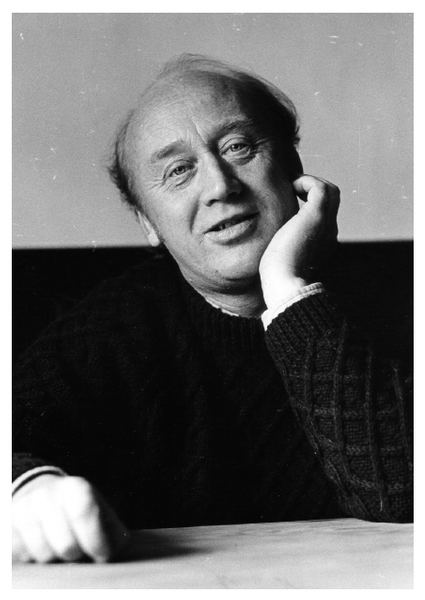
George Leslie Norris (1921-2006) was a Welsh poet and short storey writer who won several awards. He is regarded as one of the most important Welsh writers of the postwar period, and his literary works have won numerous awards. Finding Gold, The Loud Winder, the Phoenix Living Poets Series: Ransoms, and other works are among his most well-known.
3.A Tiger in The Zoo
- Books Name
- Online English tutor English Book
- Publication
- Online English tutor
- Course
- CBSE Class 10
- Subject
- English
Tiger in the Zoo
By George Leslie Norris
About the Poet
George Leslie Norris (1921-2006) was a Welsh poet and short story writer. His literary works have won many prizes. His famous works are Finding Gold, The loud winder, phoenix living poets series: Ransoms, etc.

Summary
‘This poem has put put forth the plight of tiger by comparing between a tiger in the zoo with the tiger in its natural habitat.
The poem highlights a contrast in the mood and environment of a tiger when he is in the zoo and a tiger when he is in the forest.
In the zoo, a tiger is tamed and thus looses his freedom and respect as a ferocious and powerful king of animals.
In a cemented cell behind the bars he feels angry, frustrated and helpless. And long for his natural habitat, his entity of being a terror for villagers.
In the zoo, he is helpless and a showpiece or source of entertainment to people.
The poet wants to convey that it is cruel to keep wild animals in small enclosures of the zoo, away from their natural habitat. They feel angry, helpless and unhappy in the cage. To overcome his sorrow and plight he stares at the brilliant stars with his bright eyes, in the silence of night.
Explanation
He stalks in his vivid stripes
The few steps of his cage,
On pads of velvet quiet,
In his quiet rage.
Word meanings
- Stalks: follows
- Vivid: bright coloured
- Pads: paws of tiger
- Rage: anger
the poet says tiger in the zoo that is confined behind the bars moves around in the cage under his bright coloured skin.
He can take only a few steps as the cage iis too small and it is not easy to move in it. His footsteps are inaudible as he has very soft feet, like velvet. Since he is not free, he is controlling his anger by quietly walking in the limited area of his cage.
Literary devices
- Rhyme scheme: abcb (cage-rage)
- Personification: The tiger is personified because the poet refers him as ‘he’.
- Metaphor: Tiger’s paws are compared with velvet (pads of velvet)
- Enjambment: Sentence is continuing to next line without any punctuation mark.
- Imagery: poet tries to create an image about the tiger (He stalks in his vivid stripes The few steps of his cage)
- Consonance: use of ‘s’ sound (stalks, his, stripes)
- Assonance: use of vowel sound ‘I’ (in his vivid stripes)
- Oxymoron: use of adjectives opposite in meaning (quiet rage)
He should be lurking in shadow,
Sliding through long grass
Near the water hole
Where plump deer pass.
- Lurking: To be hidden as to wait for your prey
The poet says that instead of being in the cage he should be prowling behind the long grasses waiting for his prey as his actual habitat is forest.
Literary devices
- Rhyme: rhyme scheme is abcb (grass-pass)
- Enjambment: Line continues to next line without punctuation marks. (Sliding through….deer pass)
- Alliteration: use of sound ‘p’ at the start of two words (plump pass)
- Imagery: The poet has tries to create an image of tiger’s activities (lurking in shadow).
He should be snarling around houses
At the jungle’s edge,
Baring his white fangs, his claws,
Terrorising the village!
Word meanings
Snarling: warning sounds made by animals
Baring: uncovered
Fangs: Sharp tooth of animals
The poet says that if the tiger would have been free, he would have been terrorizing the villagers living beside the forest, by his sharp teeth and claws.
Being free he would have been an actual ferocious tiger for humans instead of a piece of entertainment.
A Tiger in the Zoo Literary devices
- Rhyme Scheme: abcb rhyme scheme is followed (edge, village)
- Enjambment: Line continues to next line without punctuation marks (He should be snarling around houses At the jungle’s edge,)
- Onomatopoeia: using words which denote sound (snarling)
- Assonance: use of vowel sound ‘o’ and ‘I’ (should, around, houses), (Baring, his, white, his)
- Consonance: use of consonant sound ‘s’ (his, fangs, his, claws)
But he’s locked in a concrete cell,
His strength behind bars,
Stalking the length of his cage,
Ignoring visitors.
- Concrete: building made of bricks, cement, sand and water
The poet illustrates the real sad condition of the tiger that it is confined in a strong cell which is made of strong building material.
He further says that as the tiger is confined in the bars, his power and ferociousness are also confined.
He just stalks in the cage. He never tries to terrorise the visitors as he is aware about his limitations that in the cage his ferociousness is of no use, nobody is going to be terrorise. Therefore, he never tries to terrorise the visitors as he cannot attack them.
Literary devices
- Rhyme Scheme: abcb rhyme scheme is followed (bars-visitors)
- Personification: The tiger is personified because the poet refers him as ‘he’.
- Assonance: use of vowel sound ‘e’ (he, locked, concrete, cell)
- Consonance: use of consonant sound ‘s’ (his, strength, bars)
- Alliteration: use of sound ‘b’ at the start of two words (behind bars)
He hears the last voice at night,
The patrolling cars,
And stares with his brilliant eyes
At the brilliant stars.
Word meanings
Patrolling: to guard, to vigil
The poet says that in the night, the tiger hears the sounds of the patrolling cars then stares at the shining stars with his shining eyes. The poet wants to convey the fact that the tiger is sad and as he is confined in the cage, so, he cannot do anything. Therefore, he stares at the stars in the night and tries to divert his thoughts towards them.
Literary devices:
- Rhyme Scheme: abcb rhyme scheme is followed (cars-stars)
- Enjambment: Line three continues to line four without any punctuation mark. (And stares with his brilliant eyes At the brilliant stars.)
- Alliteration: use of sound ‘h’ in the starting of two words (he hears)
- Assonance: use of ‘I’ sound (with, his, brilliant)
Question Answers
Q1- Read the poem again, and work in pairs or groups to do the following tasks.
(i) Find the words that describe the movements and actions of the tiger in the cage and in the wild. Arrange them in two columns.
(ii) Find the words that describe the two places, and arrange them in two columns.
Now try to share ideas about how the poet uses words and images to contrast the two situations.
Answer-
(1)
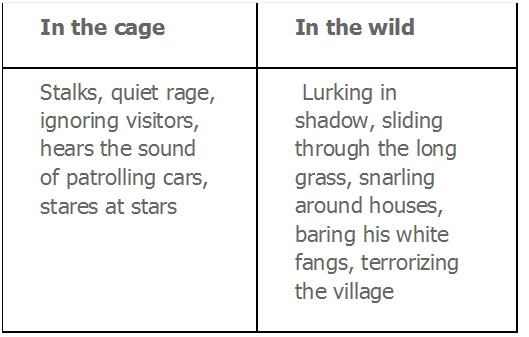
(2)
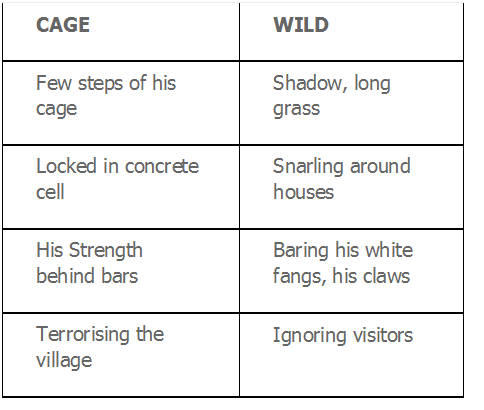
Q2- Notice the use of a word repeated in lines such as these:
(i) On pads of velvet quiet, In his quiet rage.
(ii) And stares with his brilliant eyes At the brilliant stars.
What do you think is the effect of this repetition?
Answer- The poet has repeated the words to emphasize that the tiger has to walk in the limited area of his cage. He cannot run as he would have done had it been in the forest.
Whereas ‘quiet rage’ phrase is used to illustrate his hidden anger due of his confinement in the cage. R
The next word he used is ‘brilliant’. The word brilliant in the first line means the twinkling bright stars and the brilliant words used for the tiger’s eyes shows the sadness of the tiger who would have led a free and fearless life if it were in the jungle.
4.How To Tell Wild Animals?
- Books Name
- First Flight and Foot prints
- Publication
- ACERISE INDIA
- Course
- CBSE Class 10
- Subject
- English
Poem-4
How to Tell Wild Animals
By Carolyn Well
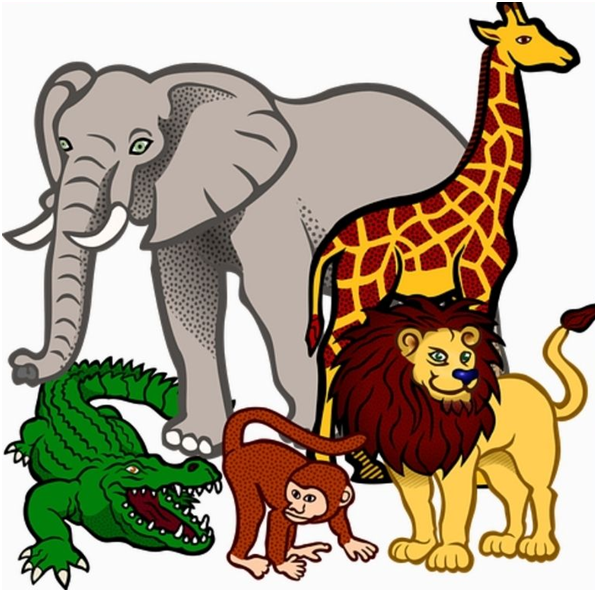
How to Tell Wild Animals Poem Introduction
In the poem, the poet describes the characteristics of various wild animals in a humorous manner. She has used language in a way that makes people laugh. She introduces the reader to various types of wild animals such as Asian lions, Bengal tigers, bears, and so on, explaining each of the animals in a very humorous manner.
nimals Poem Summary
The poet is speaking about various wild animals. These animals are extremely dangerous, and she has introduced them one by one in a hilarious manner. First and foremost, she tells us about an Asian lion. She claims that if you visit the eastern jungles and see an animal with tawny skin that roars so loudly that you will die of fear, you will die. This indicates that you have witnessed an Asian lion. The Bengal tiger is next in line, which she describes as a royal animal that attacks and kills a man in an instant. She jokes that if this beautiful black and white striped animal kills and eats you, you've met a Bengal tiger. Following that, she claims that if the reader encounters an animal with black spotted skin and it immediately jumps on him, he has encountered a leopard. Furthermore, she claims that if one cries out in pain, it may be in vain because the leopard will not stop attacking him. Then she moves on to the bear, which she promises will hug her very tightly. This is how to identify a bear as it kills a person by tightly hugging him.
As a result, she claims that the bear will continue to hug us tightly, and that this is the only way for us to recognise him. Following that, she asks the readers if they know how to identify beasts that hunt their prey. She discusses hyenas, which she believes have a smiling face, and crocodiles, which have tears in their eyes. This is visible when they are hunting their prey. The Chameleon is the last one on the list. She claims it is a lizard-like creature that lacks ears and wings like a lizard.
Only by doing so can you tell the difference between a lizard and a chameleon. She goes on to say that the chameleon has the ability to change colour depending on the colour of the surface. So, to explain this, she says that if the reader looks at the tree and can only see the tree, this means that there is a chameleon sitting on it that has already turned its colour to brown, just like the tree's branch.
How to Tell Wild Animals Poem Explanation
If ever you should go by chance
To jungles in the east;
And if there should to you advance
A large and tawny beast,
If he roars at you as you’re dyin’
You’ll know it is the Asian Lion…
- Tawny: yellowish brown color
The poet is telling the readers how they can recognise various animals in the eastern jungles. So, in the first stanza, she says that if the reader encounters an animal whose skin is yellowish brown in colour and roars at him so loudly that he can die from fear, he has encountered an Asian Lion. She has humorously described the Asian Lion, whose roar can kill a person.
Literary Devices
- Rhyme: Rhyme scheme ababcc is followed (chance-advance, east-beast, dyin-lion)
- Enjambment: Continuation of a sentence to the next line (and if there…..tawny beast)
- Inversion: Change in the format of a sentence (if there should to you advance)
- Assonance: use of vowel sound ’o’ (you should go, should to you, roars,)
- Allusion: Reference to a famous thing, place, species of animal, etc (Asian Lion)
Or if some time when roaming round,
A noble wild beast greets you,
With black stripes on a yellow ground,
Just notice if he eats you.
This simple rule may help you learn
The Bengal Tiger to discern.
- Noble: high born, aristocratic
- Discern: recognize
She describes an animal that lives in the jungle and is part of a royal clan. Its skin is yellowish in colour with black stripes. She claims that if you notice him killing and eating you, you have undoubtedly seen a Bengal Tiger. This time, she used dark humour to describe how a tiger looks, because determining which wild animal ate a person is pointless once the person has been eaten.
Literary Devices
- Rhyme: Rhyme scheme ababcc is followed (round-ground, you-you learn-discern)
- Alliteration: repetition of consonant sound ‘r’ at start of two or more closely connected words (roaming round)
- Inversion: Change in the format of a sentence (The Bengal Tiger to discern)
- Allusion: Reference to a famous thing, place, species of animal, etc (Bengal Tiger)
- Assonance: Use of vowel sound ’o’ (or if some time when roaming round)
If strolling forth, a beast you view,
Whose hide with spots is peppered,
As soon as he has lept on you,
You’ll know it is the Leopard.
’Twill do no good to roar with pain,
He’ll only lep and lep again.
- Strolling: walking casually
- Forth: forward
- Hide: skin of animal
- Peppered: Here it means the spots
- Lept (Leapt): jump towards someone
According to the poet, if you go for a walk in the jungle, you will come across an animal with spots on its skin. This animal is so fast that it will leap on you at the same time, which means it will jump on you. This leap indicates that it is none other than the Leopard. Furthermore, she adds that crying out in pain will be futile because it will continue to jump on you. So, in this stanza, the poet has described a leopard's characteristics.
Literary Devices
- Rhyme: Rhyme scheme ababcc is followed (view- you, peppered- Leopard, pain-again)
- Alliteration: use of consonant sound ‘h’ in the beginning of two words (he has)
- Poetic license: A liberty to the poet to change the spellings in order to create rhyme or rhythm in a poem (use of lept instead of leapt)
- Repetition: use of ‘lep’ word in the last line.
- Assonance: use of vowel sound ‘o’ (strolling-forth-you, whose-spot, do no good to roar)
- Consonance: use of ‘l’ sound (he’ll only lep lep)
If when you’re walking round your yard
You meet a creature there,
Who hugs you very, very hard,
Be sure it is a Bear.
If you have any doubts, I guess
He’ll give you just one more caress.
- Yard: backyard or the lawn area of a house
- Caress: A gentle touch
If you're walking around your yard and come across a creature that hugs you tightly, it's a bear. She goes on to say that if you are still unsure about the animal, the simplest way is for him to keep hugging and gently touching you. This act of his will reassure you of its identity. You will discover that it is a bear.
Literary Devices
- Rhyme: Rhyme scheme ababcc is followed (yard-hard, there- bear, guess-caress)
- Enjambment: Continuation of a sentence to the next line (if you were walking….creature there)
- Alliteration: use of ‘w’ sound (when-walking), use of ‘h’ sound (who- hugs), use of ‘b’ sound (be-bear)
- Assonance: use of vowel ‘e’ (meet a creature there)
Though to distinguish beasts of prey
A novice might nonplus,
The Crocodile you always may
Tell from the Hyena thus:
Hyenas come with merry smiles;
But if they weep they’re Crocodiles
- Distinguish: Differentiate
- Beast of Prey: Any animals that hunts other animals for food
- Novice: Someone new to a job
- Nonplus: be confused
According to the poet, recognising animals that hunt other animals for food will be like a puzzle for someone who is new to the job of recognising animals. So, in this case, the poet tries to assist the readers by distinguishing between two animals. He claims that hyenas will always be smiling, whereas crocodiles will always be crying. Both of these animals are extremely dangerous.
Literary Devices
- Rhyme: Rhyme scheme ababcc is followed (prey-may, nonplus-thus, smiles-crocodiles)
- Alliteration: use of consonant sound ‘n’ (novice-nonplus), use of ‘th’ sound (the-thus)
- Enjambment: continuation of sentence to the next line (though to distinguish….might nonplus, The crocodile…..hyena thus)
The true Chameleon is small,
A lizard sort of thing;
He hasn’t any ears at all,
And not a single wing.
If there is nothing on the tree,
’Tis the chameleon you see.
According to the poet, the next creature is a Chameleon, which is a small creature. The only difference between it and a lizard is that the chameleon lacks ears and wings. Furthermore, she claims that chameleons can change their colour depending on the surface they are sitting on. As a result, if you see a tree with nothing else on it, it must be a chameleon sitting on it. Its colour has changed to that of a tree.
Literary Devices
- Rhyme: Rhyme scheme ababcc is followed (small-all, thing-wing, tree-see)
- Alliteration: use of ‘h’ sound (he hasn’t)
- Consonance: use of ‘g’ sound (single wing)
About the Author
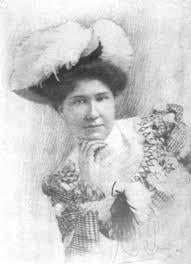
Carolyn Wells (1862-1942) was an American author best known for her mystery novels. Her most famous works include At the Sign of the Sphinx (1896), The Jingle Book (1899), Betty's Story (1899), and others.
5.The Ball Poem
- Books Name
- First Flight and Foot prints
- Publication
- ACERISE INDIA
- Course
- CBSE Class 10
- Subject
- English
Poem-5
The Ball Poem
By John Berryman
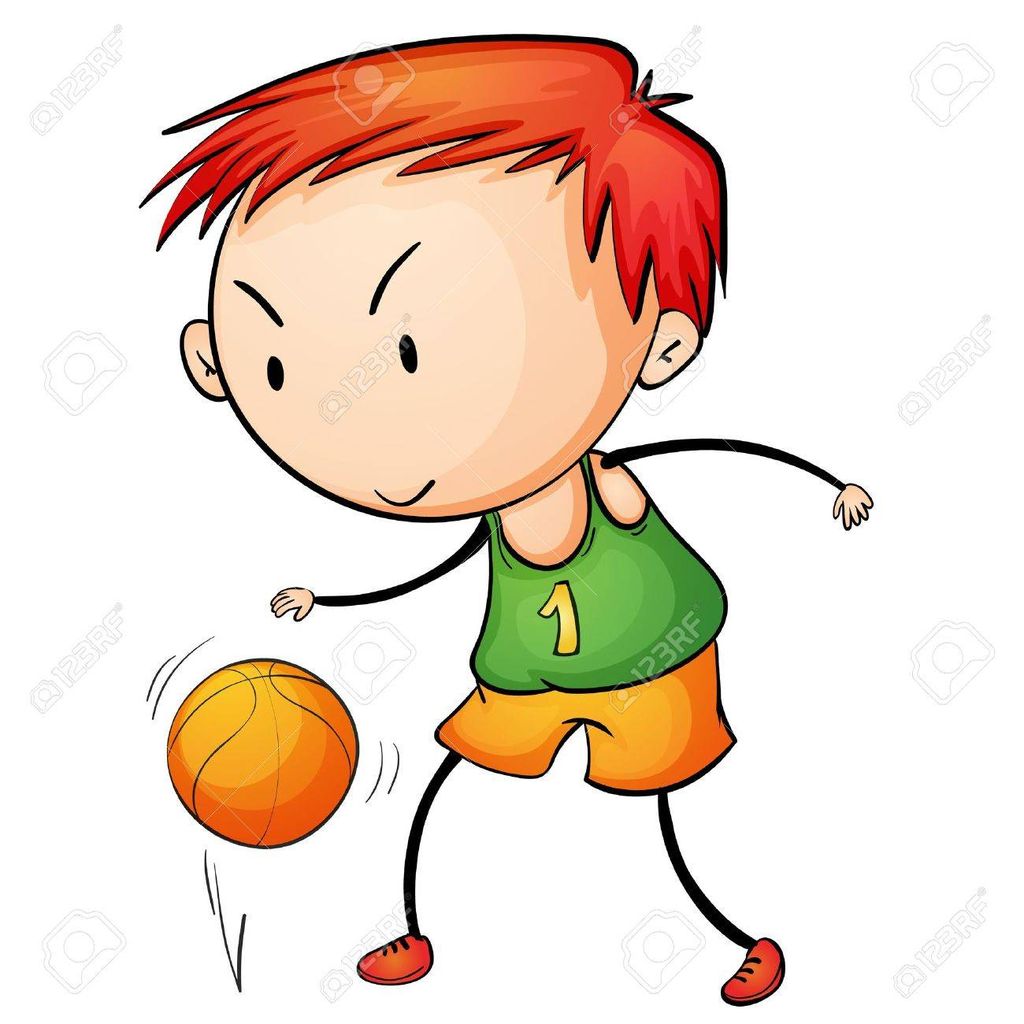
The Ball Poem Introduction
The poet John Berryman described the reality of life that everyone must face one day in his poem "The Ball Poem." He has addressed the issue of how to deal with life's adversities and sorrows.
The Ball Poem Summary
The poet is referring to a young boy who has misplaced his ball. He was having fun with his ball. The ball slipped from his grasp and landed in a nearby body of water. The poet claims that seeing the boy lose his favourite ball made him reflect on the boy and his reaction to the situation. He goes on to say that the boy was helplessly staring into the water where his ball had vanished. He was depressed and trembling with fear. He became so engrossed in his grief that he stood near the harbour for an extended period of time, searching for his ball.
The poet says he could console him by telling him that he might get new balls, or he could give him money to buy another ball. But he stops himself because he believes that the money will bring a new ball but will not bring back the memories and feelings associated with the lost ball. He goes on to say that the boy must now learn his responsibilities. The poet is implying here that the boy is about to learn the most difficult lesson of his life. The lesson of accepting the harsh realities of life, such as the fact that we will lose our loved ones and our beloved possessions one day.
The Ball Poem Explanation
What is the boy now, who has lost his ball,
What, what is he to do? I saw it go
Merrily bouncing, down the street, and then
Merrily over — there it is in the water!
- Merrily: cheerful
- Bouncing: jumping up and down
The poet is referring to a young boy who has misplaced his ball. He's curious about him and his reaction because he's misplaced his ball. Furthermore, he wonders to himself what this boy will do if he loses his ball. The poet notices the ball slipping away from the boy. According to him, the ball was joyfully jumping up and down in the street. This means that when the ball slipped from the boy's grasp, it landed in the street and later in the nearby river.
Literary devices:
- Anaphora: use of repeated words in two or more lines (What is the boy… what, what and merrily bouncing… merrily over)
- Assonance: repeated use of vowel ‘o’ (boy, now, who, lost)
- Imagery: when poet says merrily bouncing down the street
- repetition: ‘what’ is repeated
No use to say ‘O there are other balls’:
An ultimate shaking grief fixes the boy
As he stands rigid, trembling, staring down
All his young days into the harbour where
His ball went. I would not intrude on him;
A dime, another ball, is worthless. Now
He senses first responsibility
- Grief: sorrow
- Rigid: fixed
- Trembling: shaking
- Harbour: dock, port
- Intrude: invader
- Dime: 10 cents (U.S)
- Worthless: valueless, useless
The poet claims that it is pointless to console the boy by telling him that he will get another ball because he already has other balls. He says this because the boy is depressed. He is completely engulfed in grief. He is depressed because all of his childhood memories were washed away with the ball. The boy is sad, according to the poet, because the ball, which has now fallen into the water, reminds him of those sweet memories, of the times when he owned it. This loss is unbearable for him, and he is grieving. The poet claims that he is unable to even tell the boy to take some money from him in order to purchase another ball. He says this because the new ball will not give the boy a sense of belonging. Furthermore, the poet states that the time has come for the boy to learn the importance of taking care of his belongings.
Literary devices:
- Repetition: use of word ‘ball’
- Asyndeton: no use of conjunction in a sentence (A dime, another ball, is worthless)
In a world of possessions. People will take
Balls, balls will be lost always, little boy.
And no one buys a ball back. Money is external.
He is learning, well behind his desperate eyes,
The epistemology of loss, how to stand up
Knowing what every man must one day know
And most know many days, how to stand up.
- Possessions: ownership
- External: Here, things with which feelings are not attached
- Desperate: hopeless
- Epistemology: The Greek word episteme means ‘knowledge’
The poet says here that the boy must learn that many of his possessions will be lost in this materialistic world. He personifies the ball as his possessions, whether they are material items or relationships. As a result, he claims that he must learn to live without them no matter what. He claims that no one can buy such items back for him. The poet stated this because, in his opinion, money cannot buy everything. Even if it does buy you something materialistic, it will not be able to buy you a sense of belonging. He claims that the boy is learning to stand up to his sense of loss. This means that the boy is attempting to learn the true meaning of life, which states that you must accept your misfortunes and rise again. This is the truth that everyone must learn in their lives. The harsh reality of standing up to the strange miseries of life that everyone must bear.
Literary devices:
- Alliteration: use of sound ‘b’ at the start of two consecutive words (buys a ball back)
- Assonance: use of vowel sound ‘e’ (He is learning, well behind his desperate eyes)
- Repetition: ‘ball’ word is repeated
- Rhyme scheme: There is no rhyme scheme followed in the poem.
About the Author

John Berryman was a poet and scholar from the United States. He is best known for Dream Songs (1969), a collection of 385 poems. He was awarded the Pulitzer Prize for his dream songs. He also received a National Book Award.
5.The Ball Poem
- Books Name
- Online English tutor English Book
- Publication
- Online English tutor
- Course
- CBSE Class 10
- Subject
- English
The Ball Poem
by John Berryman

About the Poet
John Berryman was an American poet and scholar. He is best known for the Dream Songs (1969) which was a sequence of 385 poems. He won Pulitzer Prize for the dream songs. He also won the National book award
Summary
In this poem the poet is trying to illustrate that one must learn how to bear loss which is certain reality of life, by describing a boy who has lost his ball.
A boy has lost his ball while playing when it bounces out of his control and finally falls into the water. Consequently, the boy became sad.
The poet feels his sorrow that how his memories were attached to that ball that no other ball will be sufficient to lessen his sadness. Here, the lost ball is metaphorically used to convey general loss of a human being that can be the loss of personal possession, the death of some near and dear one.
The poet has conveyed the beautiful lesson that everyone has to bear losses throughout his life, he must learn how to face the sorrow and move on in life.
The Ball Poem Introduction
The poet John Berryman through his poem, ‘The ball poem’ has described the reality of life which everyone has to face one day. He has touched the topic of how to stand up against the miseries and sorrows of life.
Explanation
What is the boy now, who has lost his ball,
What, what is he to do? I saw it go
Merrily bouncing, down the street, and then
Merrily over — there it is in the water!
1. Merrily: cheerful
2. Bouncing: jumping up and down
The poet is depicting the sad moments of a boy who has lost his ball. He is trying to find out what this boy will do after losing his ball.
The poet has seen the ball going away from the boy, merrily jumping up and down in the street and finally it fell into the water before he could catch it.
Thus, he lost his ball while playing happily with it. The poet is trying to seek how does the boy feel. Is he prepared the bear the loss or not.
Literary devices:
Anaphora: use of repeated words in two or more lines (What is the boy… what, what and merrily bouncing… merrily over)
Assonance: repeated use of vowel ‘o’ (boy, now, who, lost)
Imagery: when poet says merrily bouncing down the street
repetition: ‘what’ is repeated
No use to say ‘O there are other balls’:
An ultimate shaking grief fixes the boy
As he stands rigid, trembling, staring down
All his young days into the harbour where
His ball went. I would not intrude on him;
A dime, another ball, is worthless. Now
He senses first responsibility
- Grief: sorrow
- Rigid: fixed
- Trembling: shaking
- Harbour: dock, port
- Intrude: invader
- Dime: 10 cents (U.S)
- Worthless: valueless, useless
The poet says that the boy is very sad and it is useless to consoling him by saying that he will get another ball because all his memories of the childhood days were connected with that ball, so no other ball can be a substitute of that.
This is indeed an unbearable loss for him. Thus, he is grief stricken. The poet says that he would not console him as this is the high for the boy to learn
the responsibility of taking care of his things.
Literary devices:
Repetition: use of word ‘ball’
Asyndeton: no use of conjunction in a sentence (A dime, another ball, is worthless)
In a world of possessions. People will take
Balls, balls will be lost always, little boy.
And no one buys a ball back. Money is external.
He is learning, well behind his desperate eyes,
The epistemology of loss, how to stand up
Knowing what every man must one day know
And most know many days, how to stand up.
Word meanings
- Possessions: ownership
- External: Here, things with which feelings are not attached
- Desperate: hopeless
- Epistemology: The Greek word episteme means ‘knowledge’
In these lines, the poet says that the boy need to learn that in this world, where we owe so many belongings, these possessions will be lost for sure or will never last for wholelife.
He symbolises the ball as his belongings (ownership or relationship) says that he has to learn to live without them no matter what.
The poet says no other ball could be its substitute as that could never be associated with his memories or sense of belongingness
He says that the boy is getting a lesson that how to bear the loss of sweet belongings and be responsible for others in future .
This is the harsh reality that everyone has to learn in his or her life.
Literary devices:
Alliteration: use of sound ‘b’ at the start of two consecutive words (buys a ball back)
Assonance: use of vowel sound ‘e’ (He is learning, well behind his desperate eyes)
Repetition: ‘ball’ word is repeated
Rhyme scheme: There is no rhyme scheme followed in the poem.
The Ball Poem Questions Answers
Q1-Why does the poet say, “I would not intrude on him”? Why doesn’t he offer him money to buy another ball?
Answer- The poet does not want to intrude so that the boy can the reality of life which is full of separation and loss. Thus, he must learn to accept the loss of the most important thing or relationship.
Q2- “… staring down/All his young days into the harbour where/His ball went …” Do you think the boy has had the ball for a long time? Is it linked to the memories of days when he played with it?
Answer- Yes, through these lines we can say that the boy had the ball for a very long time as it tells how the boy recalls those days when he used to play with the ball. The ball was surely linked to some sweet memories of his playing with the ball.
Q3- What does “in the world of possessions” mean?
Answer- In the world of possessions means that the world is full of materialistic things. Materialistic things are those things which bring comfort and luxury in our life.
Q4- Do you think the boy has lost anything earlier? Pick out the words that suggest the answer?
Answer- The line in the poem “now he senses his first responsibility’ helps us to know that the boy has not lost anything before.
Q5- What does the poet say the boy is learning from the loss of the ball? Try to explain this in your own words?
Answer- The poet means that the boy will learn the harsh reality of life. He will learn how to accept the loss and move on in life. Everyone experiences this in his/ her life when they lose either something or someone. The fact that lost things never come back make people strong enough to live their life by accepting this truth of life.
6.Amanda
- Books Name
- First Flight and Foot prints
- Publication
- ACERISE INDIA
- Course
- CBSE Class 10
- Subject
- English
Poem-6
Amanda
By Robin Klein
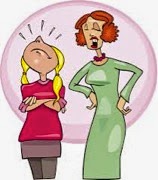
Amanda Poem Introduction
Robin Klein has expressed the thoughts of a young girl named Amanda, who is constantly chastised by her mother for making mistakes. Mistakes that she considers to be such because they are not part of the society's code of good behaviour.
Amanda Poem Summary
The poem is about a girl named Amanda and her mother, who is constantly nagging her about her mistakes. She is probably first called out by her mother for biting her nails and not sitting properly. Amanda, according to her mother, sits in a very sluggish manner. Amanda imagines herself as a mermaid living a peaceful and relaxing life in the beautiful green sea. She is also chastised for not cleaning her room and shoes, as well as not doing her homework. She then imagines herself to be an orphan because she is tired of constantly being watched by her parents.
She claims that she would have enjoyed her freedom then by making patterns in the sand with her bare feet and would have lived a peaceful life. Amanda is then chastised for eating too many chocolates, which causes pimples. She is also chastised for failing to listen to her mother. So Amanda imagines herself as Rapunzel, a character from a fairy tale, and wishes to live in a huge tower like her. She will be alone in the tower, living a peaceful life and never allowing anyone to enter.
Finally, the mother requests that she refrain from being moody because she does not want anyone to blame her for harassing her daughter. At this time, the poet has not written a response from Amanda's point of view. This constant nagging has made her so depressed that she has given up imagining herself as someone else. She used to do this to get away from her parents' constant harassment and dominance.
Amanda Poem Explanation
Don’t bite your nails, Amanda!
Don’t hunch your shoulders, Amanda!
Stop that slouching and sit up straight,
Amanda!
(There is a languid, emerald sea,
where the sole inhabitant is me—
a mermaid, drifting blissfully.)
- Hunch: bend
- Slouching: sitting in a lazy way
- Languid: relaxed
- Emerald: here, green color
- Inhabitant: resident
- Drifting: carried slowly by the water
- Blissfully: happily
The poet is describing Amanda, a young girl who is constantly chastised by her mother for her errors, and how she imagines her life to be. According to the poet, Amanda's mother is chastising her for a bad habit of biting her nails. She then instructs her to sit up straight without bending her shoulders. Amanda, who has a habit of bending her shoulders and sitting sluggishly, is being called out because her mother wants her to sit properly. She imagines herself in a deep green sea when she is being scolded by her mother at this time.She declares her desire to be the sole occupant of this lovely green sea. She imagines herself as a mermaid who lives alone and leads a very relaxing life. She expresses a desire to be carried away by the current of water and experience the relaxing environment that exists there.
Literary devices:
- Anaphora: Repeated use of a word at start of two or more lines (don’t bite… don’t hunch)
- Assonance: use of vowel sound ‘o’ (don’t hunch your shoulders)
- Rhyme: aaba ccc (Amanda, Amanda, straight, Amanda, sea, me, blissfully)
- Metaphor: use of word emerald sea for green colour of sea being similar to the colour of emrald
- Repetition: use of word ‘Amanda’
- Imagery: drifting blissfully
- Alliteration: ‘Stop that slouching and sit up straight’ – ‘s’ sound is being repeated at the start of closely placed words.
- Allusion: ‘mermaid’ is a well known imaginary creature.
Did you finish your homework, Amanda?
Did you tidy your room, Amanda?
I thought I told you to clean your shoes,
Amanda!
(I am an orphan, roaming the street.
I pattern soft dust with my hushed, bare feet.
The silence is golden, the freedom is sweet.)
- Orphan: A child whose parents are dead
- Hushed: quiet and still place
The poet claims that Amanda's mother is questioning her about whether or not she has completed her homework. Then she inquires as to whether or not she has cleaned her room. In addition, she is reminded to clean her shoes. So, as we can see, the mother is constantly questioning her about whether or not her homework was completed, or whether or not she had cleaned up her room and shoes. However, while Amanda is listening to her mother's instructions, she imagines herself as an orphan wandering the streets. This means she imagines that if she hadn't had parents, she would have been able to walk freely in the streets. She would have quietly drawn designs on the soft dust with her bare feet. As a result, we can see that she thinks in opposition to her mother. Her mother expects her to keep everything in order. Amanda, on the other hand, wants to run around in the dirt with her bare feet. Furthermore, she is so tired of her mother's constant instructions that she says silence is golden, which means silence is extremely important and valuable. She continues, "Freedom is sweet." This means that when she is with her mother, she never feels free.
Literary devices:
- Anaphora: Repeated use of a word at start of two or more lines (did you finish….did you tidy)
- Rhyme: Rhyme scheme is aada eee (Amanda, Amanda, shoes, Amanda, street, feet, sweet)
- Assonance: use of vowel sound ‘o’ (Thought, told, you, your, shoes)
- Repetition: use of word ‘Amanda’
- Metaphor: silence is golden – silence is said to be glorious like golden colour
freedom is sweet – freedom is said to be sweet in taste.
Don’t eat that chocolate, Amanda!
Remember your acne, Amanda!
Will you please look at me when I’m speaking to you,
Amanda!
(I am Rapunzel; I have not a care;
life in a tower is tranquil and rare;
I’ll certainly never let down my bright hair!)
- Acne: Pimples
- Rapunzel: A girl in the fairy tale by Brothers Grimm
- Tranquil: calm, quiet
- Rare: uncommon
Amanda's mother then forbids her from eating chocolate. She reminds her of the pimples Amanda gets from eating chocolate. Finally, she chastises her for not listening to what her mother says. Amanda is currently imagining herself as Rapunzel. Rapunzel was a fairy tale character who was imprisoned in a tower by a witch. The witch used to climb the tower using Rapunzel's long hair, which she let down through the window. So, Amanda now wishes to be Rapunzel because she believes that life in the tower will be peaceful and unusual. She believes she will be liberated and able to live in peace in the tower. She also promises herself that she will never let her hair down in front of anyone, so that no one can approach her in the tower.
Literary devices:
- Allusion: use of famous fairy tale character Rapunzel
- Rhyme: rhyme scheme aafa ggg (Amanda, Amanda, you, Amanda, care, rare, hair)
- Assonance: use of vowel sound ‘e’ and ‘o’ (Will you please look at me when I’m speaking to you
- Consonance: use of sound ‘r’ (I am Rapunzel; I have not a care …..Bright hair)
- Repetition: use of word ‘Amanda’
Stop that sulking at once, Amanda!
You’re always so moody, Amanda!
Anyone would think that I nagged at you,
Amanda!
- Sulking: be in a bad mood
- Moody: unstable
- Nagged: harass
Amanda's mother has now warned her for acting strangely. She begs her to stop being grumpy. Furthermore, she accuses her of being in such a bad mood. She also chastises her, saying that her actions will lead people to believe that Amanda is constantly harassed by her mother. So, we can conclude that, despite the fact that Amanda is constantly chastised by her mother for minor infractions, she is unable to respond. If she reacts to this by becoming emotional, her mother scolds her and tells her that she should not act like this because others will think Amanda's mother is very domineering towards her child.
Literary Devices:
- Alliteration: ‘Stop that sulking’ – ‘s’ sound is repeated at the start of closely placed words
- Repetition: use of word ‘Amanda’
- Rhyme scheme: aaha (Amanda, Amanda, you, Amanda)
About the Author

Robin Mc Maugh Klein is a children's book author from Australia. She is a children's and young adult fiction author. Hating Alison Ashley, People Might Hear You, and other works are among her most well-known.
7.Animals
- Books Name
- First Flight and Foot prints
- Publication
- ACERISE INDIA
- Course
- CBSE Class 10
- Subject
- English
Poem-7
Animals
By Walt Whitman
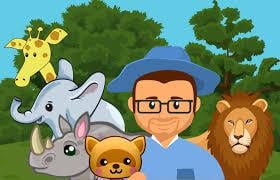
Animals Poem Introduction
In his poem, Walt Whitman makes a comparison between humans and animals. He has identified the flaws in the human brain that he believes animals lack. That is why he believes that animals are superior to humans.
Animals Poem Summary
The poet describes his desire to become an animal in the poem animals because he believes animals are far superior to humans. Human beings are avaricious and envious of one another. Animals, on the other hand, are calm and self-contained. The animals are content with their circumstances. They never complain about their misfortunes or sorrows. Humans, on the other hand, complain about their plight. They place more value on the wealthy and powerful, are agitated by their wrongdoings, and are drawn to the world's luxurious possessions. Animals, on the other hand, are open about their relationships and do not prioritise one class over another. They lead a life that is filled with honesty and less greed and jealousy.
Animals Poem Explanation
I think I could turn and live with animals, they are
so placid and self-contained,
I stand and look at them long and long.
- Placid: calm, peaceful
- Contained; keep up control
The poet expresses a desire to live in the world of animals. In this case, we can say that the poet prefers the world of animals to that of humans. He also claims that animals are more peaceful than humans. He says this because animals do not chase after worldly things like humans do. They are calm and have no desire for worldly possessions or achievements. They are self-contained, which means they are content with their lives and never interfere with the lives of others. Humans have a tendency to interfere in the lives of others. As a result, the poet believes that animals are superior to humans in terms of remaining calm and not interfering in the affairs of others. The poet goes on to say that these are the reasons he stands still and stares at the animals for so long.
Literary Devices:
- Assonance: use of vowel sound ‘I’ (I, think, I, live, with, animals)
- Repetition: use of the word ‘long’
- Anaphora: ‘I’ word used at the start of two consecutive lines
They do not sweat and whine about their condition,
They do not lie awake in the dark and weep for their sins,
They do not make me sick discussing their duty to God,
Not one is dissatisfied, not one is demented with
the mania of owning things,
Sweat: here it means complaint
- Whine: cry
- Sins: wrongdoing
- Demented: mad, disturbed
According to the poet, animals, unlike humans, do not complain about their suffering. They never cry aloud, as humans do, to express their grief. They never stay awake at night, crying out in sorrow for their wrongdoings. This means that animals differ from humans in that they do not express anger or grief when something goes wrong with them. He goes on to say that animals are very honest because they never brag about their good deeds done in the name of God. He says this because the majority of people do it. They make an effort to demonstrate their good deeds and religiousness to others. They do so to gain popularity among their peers. As a result, the poet believes that animals never irritate him by doing such things in order to gain praise from their peers. He believes that animals, unlike humans, are not dissatisfied. They are content with whatever they have. They are never swayed by worldly things. They never try to accumulate items of comfort or luxury. He claims that none of them are insane for wanting worldly possessions.
Literary Devices:
- Anaphora: use of repeated words at the beginning of two or more consecutive lines (use of “they do not”)
- Metaphor: sweat and whine refer to the cries and complaints of human beings
Not one kneels to another, nor to his kind that
lived thousands of years ago,
Not one is respectable or unhappy over the whole earth.
So they show their relations to me and I accept them,
They bring me tokens of myself, they evince
them plainly in their possession
- Kneels: bow down
- Evince: show, reveal
- Possession: ownership of something
- Tokens: here, the qualities
The poet asserts that he has never seen an animal show his love for someone by bowing down in front of them. They never do this, not even for their forefathers. They do not show the same devotion to God that humans do. Nobody among them is as respected or important as we are in human society. When compared to the poor, rich people are generally given more importance and treated with more respect. However, in animal society, this is never the case. They never place a higher or lower value on any other animal. Everyone in the animal kingdom is happy. They are not like humans who find themselves to be the happiest or saddest person on the planet. The poet goes on to say that animals are more forthcoming about their interactions with other animals. He's trying to say here that animals eat other animals and never try to hide it. Whereas humans appear to have pleasant and friendly relationships with others, the reality is quite the opposite. According to the poet, he accepts the fact that animals are true when it comes to showing their relationship with other animals.
Literary Devices:
- Metaphor: The inner qualities of humans are referred to as tokens
I wonder where they get those tokens,
Did I pass that way huge times ago and negligently drop them?
- Negligently: Carelessly
Finally, the poet reflects on himself and asks where the animals' good qualities came from. He also wonders where his own good qualities have vanished. Did he abandon them or had they been misplaced? Animals now possess qualities that were previously found in humans, such as innocence, kindness, and truthfulness. He is perplexed as to how humans lost these qualities and how they have been passed down to the animals.
About the Author
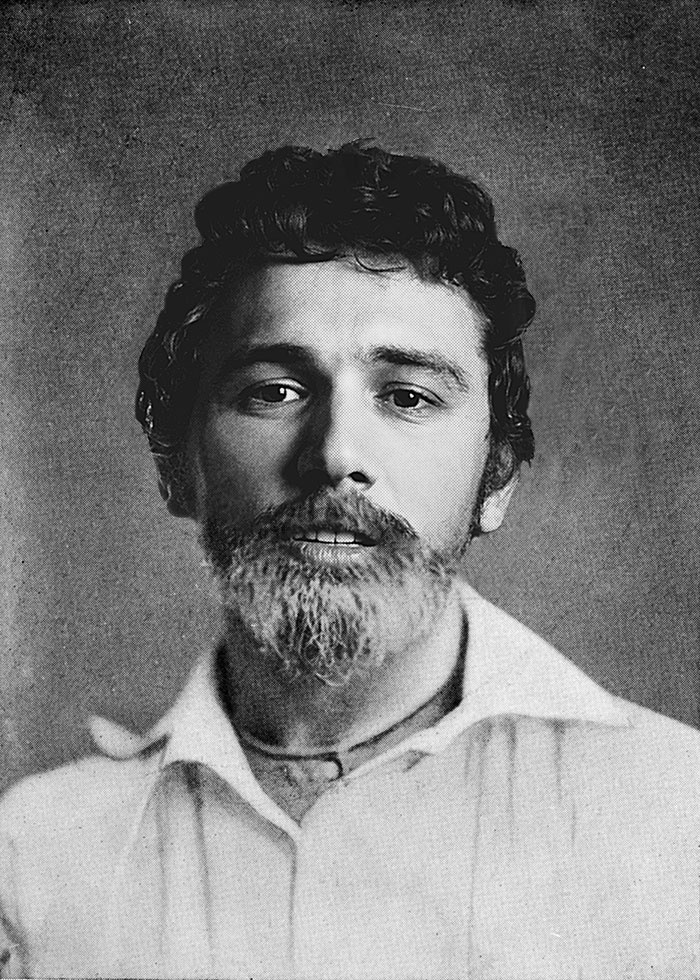
Walt Whitman (1819-1892) is regarded as a pivotal figure in early American poetry. He defied the conventions of rhymed and metrical poetry. He was well-known for creating a revolutionary new type of poetry in free verse. 'Animals' is a poem from his work 'Song of Myself' in Leaves of Grass.
8.The Trees
- Books Name
- First Flight and Foot prints
- Publication
- ACERISE INDIA
- Course
- CBSE Class 10
- Subject
- English
Poem-8
The Trees
By Adrienne Rich
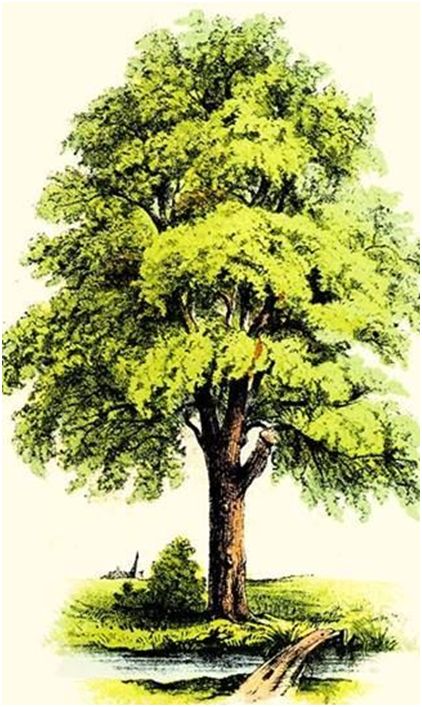
The Trees Poem Introduction
The trees in the poem are a metaphor for women, and the poem has a symbolic meaning. According to the poet, the women have rested, healed, and recovered, and are now ready to fulfil their primary mission: to renew mankind's empty forest.
The Trees Poem Summary
The poet uses trees as a metaphor. They refer to women who have been healed and are ready to leave their homes to fulfil their primary purpose – to renew mankind's forest. Because women have remained indoors, the forest has become desolate, leaving birds and insects without a place to live. The Sun's rays do not collide with tree trunks and leaves and thus do not reach the earth. She claims that the forest will be densely forested the following morning. The tree roots are working hard to separate from the veranda floor, where they have remained fixed. The leaves and branches are making their way towards the windows. They are desperate to leave, just as a newly discharged patient who has not fully recovered rushes to the hospital's exit door. The poet is sitting on her veranda with the doors open. She's writing letters, but she's not mentioning the trees' movement. It's late at night, the sky is clear, and a full moon can be seen. She can smell the leaves and lichen, which appear to be desperately calling out to her. She hears the window pane's glass shatter. The trees are edging out, and the strong wind is embracing them. As the trees reach the forest, the tall and powerful oak tree overshadows the moon, which appears to be broken into several pieces.
The Trees Poem Explanation
The trees inside are moving out into the forest,
the forest that was empty all these days
where no bird could sit
no insect hide
no sun bury its feet in shadow
the forest that was empty all these nights
will be full of trees by morning.
According to the poet, the trees are moving out of the confines of the houses and into the open forest. Because trees are immovable, this is unrealistic, and we realise that the poem has a symbolic meaning. We interpret trees to be females who have healed themselves and are ready to leave their homes and enter the forests to fulfil their primary purpose of populating the world with humans. She goes on to say that the forest has been empty for many days, so no birds can be seen because there are no trees to sit on, no insects can be seen because there is no shelter, and the sun cannot form any shadows. For many days, the forest of humanity has been empty, but it will soon be full and bright.
Literary Devices:
- Personification: Sun bury it’s feet. Sun has been personified.
- Enjambment: Continuation of a sentence to the next line (the forest that was…… trees by morning).
- Anaphora: 2 lines begin with ‘no’
- imagery: “The trees inside are moving out into the forest” – shows kinestatic imagery
All night the roots work
to disengage themselves from the cracks
in the veranda floor.
The leaves strain toward the glass
small twigs stiff with exertion
long-cramped boughs shuffling under the roof
like newly discharged patients
half-dazed, moving
to the clinic doors.
- Disengage: remove
- Strain: pressure
- Twigs: small stem
- Exertion: effort
- Cramped: restricted
- Boughs: branch
- Shuffling: mixing
- Discharged: send out
- Dazed: stu
The poet describes the plants' struggle to reach the forest. She claims that the roots worked all night to free themselves from the veranda floor. The leaves worked hard to get to the glass window so they could go outside. Even the small stems of the trees exert considerable effort in order to break free. The large branches were also attempting to emerge from the room's roof. We can say that women are desperate for a change, and their efforts can be compared to those of a patient who has been released from the hospital and tries to leave quickly despite being confused. Perhaps they are unsteady but in a hurry to leave the clinic because they are half conscious and under the influence of some medication.
Literary Devices:
- Enjambment: continuation of sentence to the next line (the leaves strain……. Half dazed)
- Simile: trees compared to patients (like newly discharged patients)
- personification: twigs and boughs have been personified.
I sit inside, doors open to the veranda
writing long letters
in which I scarcely mention the departure
of the forest from the house.
The night is fresh, the whole moon shines
in a sky still open
the smell of leaves and lichen
still reaches like a voice into the rooms
- Scarcely: barely
- Departure: leaving
- Lichen: crusty patches of bushes of fungus and algae on tree trunks, having a distict smell
According to the poet, she is sitting on her veranda, writing long letters. In her letters, she makes no mention of the trees leaving her house. She claims that the night is crystal clear. She can see the entire moon that is shining. The smell of leaves and lichens is like a yelling voice expressing a desire to be free of the confines of the house.
Literary Devices:
- Alliteration: ‘long letters’ forest from’ ‘sky still’ ‘leaves and lichen’
- Enjambment: continuation of sentence to the next line (doors open….the house)
- Imagery: the poet has tried to create a scene in which she is observing all the things happening (the night is fresh……into the rooms)
My head is full of whispers
which tomorrow will be silent
Listen. The glass is breaking.
The trees are stumbling forward
into the night. Winds rush to meet them.
The moon is broken like a mirror,
its pieces flash now in the crown
of the tallest oak.
- Whispers: murmur
- Stumbling: trip over
- Flash: glare, shine
- Oak: A large, strong tree generally used for making furniture
Her mind is filled with the slow sounds made by the trees as they try to escape. These noises will not be heard the following day. The poet instructs the reader to pay close attention because a change is about to occur. The trees stumble out into the night as she hears the glass window break. Outside, the wind is howling. It collides with the trees. The moon is like a mirror, and it appears to be broken into pieces as the oak tree's shadow divides it into many fragments.
Literary devices:
- Simile: The moon is compared to a mirror (Moon is broken like a mirror)
About the Author

Adrienne Rich (1929-2012) was born in Baltimore, Maryland, in the United States. She was a well-known feminist, essayist, and poet. She has nineteen volumes of poetry, three collections of essays, and three collections of other writings.
9. Fog
- Books Name
- First Flight and Foot prints
- Publication
- ACERISE INDIA
- Course
- CBSE Class 10
- Subject
- English
Poem-9
Fog
By Carl Sandburg
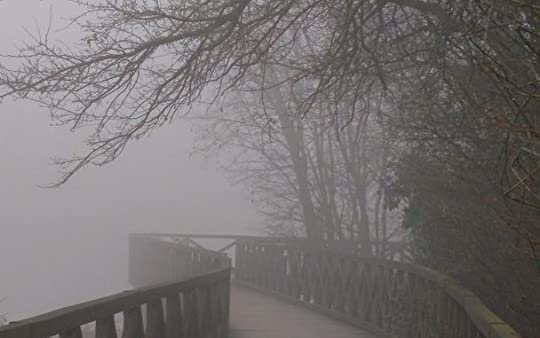
Fog Poem Introduction
Carl Sandburg wrote the poem Fog, which is a very short poem. He has described the fog's arrival in a city and the harbour. He has eloquently compared it to a cat.
Fog Poem Summary
According to the poet, the fog that is common during the winter season is approaching the city and the harbour like a cat. This means that it is approaching the city in such a quiet manner that no one will notice its presence. He compared its appearance to that of a cat because a cat always enters a room quietly. Next, he claims that the fog has blanketed the entire city and harbour, and it appears to be sitting by folding its legs and looking around, much like a cat does when it sits on its haunches and looks around. Finally, he describes the disappearance of the fog, which vanishes quietly and unexpectedly, similar to the disappearance of the cat.
Fog Poem Explanation
The fog comes
on little cat feet.
It sits looking
over harbour and city
on silent haunches
and then moves on.
- Fog: It is a thick cloud of tiny water droplets present in the atmosphere, especially in winter.
- Harbour; Port, dock
- on haunches: sitting with knees bent
The fog is being described by the poet. A fog is a dense cloud of tiny water droplets in the atmosphere. It is most common during the winter season. The poet describes the movement of fog towards the city and the harbour in this section. He describes the fog as "coming like a cat on its little feet." This means that the fog moves slowly and calmly towards the city, much like a cat. It is impossible to predict how and when the fog will enter the city. As a result, fog is likened to a cat that enters our home in an unpredictable manner.
The fog, he continues, sits over the entire city like a cat sitting silently by folding her legs behind itself and looking around at the nearby places and things. Similarly, it appears that the fog is silently covering the entire city and harbour and is sitting on top of them, looking around like a cat. After a while, the fog moves away from the city. The poet says this because it is a natural phenomenon that fog does not stay in one place for long and eventually leaves. As a result, the poet says that, like a cat, the fog leaves the area quietly and unnoticed by anyone.
Literary devices:
- Metaphor: Fog is compared to cat (On little cat feet)
- Rhyme scheme: There is no rhyme scheme followed. Poem is in free verse
- Enjambment: When a sentence continues to next line (It sits looking….. then moves on)
- Personfication: fog has been personified – Fog comes, it sits
About the Author
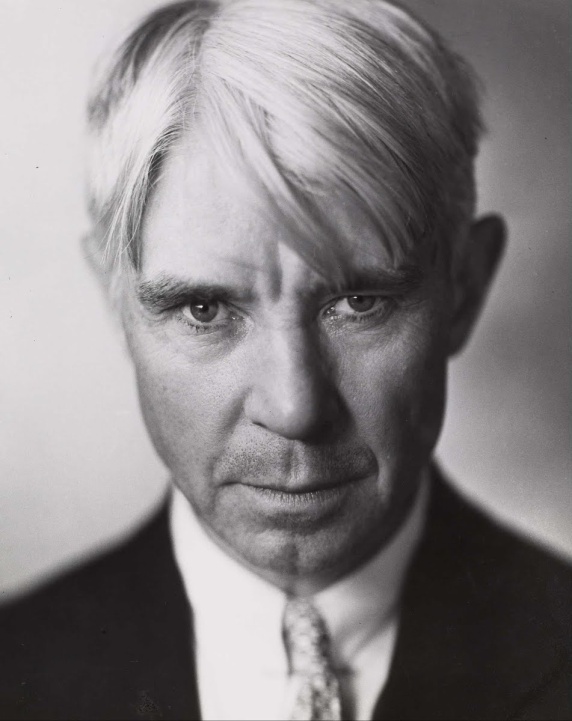
Carl August Sandburg (1878-1967) was a poet, writer, and editor from the United States. He was awarded three Pulitzer Prizes, two for poetry and one for his biography of Abraham Lincoln. He wrote poems such as grass, analysis, and Chicago, among others.
10. The Tales of Custard the Dragon
- Books Name
- First Flight and Foot prints
- Publication
- ACERISE INDIA
- Course
- CBSE Class 10
- Subject
- English
Poem-10
The Tale of Custard the Dragon
By Ogden Nash
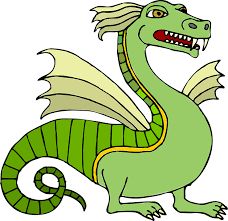
The Tale of Custard the Dragon Poem Introduction
Ogden Nash wrote a poem about Belinda, a little girl who has many pets, including a black kitten named ink, a grey mouse named blink, a yellow dog named mustard, and a coward dragon named custard. Except for the dragon, who is a coward, the poet has described every character as brave. But everything changes when a pirate attacks Belinda's house. No one else dared to confront him, and it was the dragon who killed the pirate. All of the characters are happy because the dragon has saved them, but they quickly change their minds and describe themselves as more powerful if the situation had not been so confusing for all of them.
The Tale of Custard the Dragon Poem Summary
Custard the Dragon's storey is a ballad. It's a lighthearted poem about a timid dragon named Custard. Custard is Belinda's pet, and she lives in a small white house with her pets. She had a black kitten named ink, a grey mouse named blink, a yellow dog named mustard, and a timid dragon named custard. Except for the dragon, according to the poet, they are all very brave. Others have been described as brave and compared to animals such as bears, tigers, and lions, but the dragon is extremely fearful. He is always looking for a safe haven for himself. He is mocked by all of the other characters. However, they are taken aback one night when a pirate enters the house. They all become terrified and begin to hide in various locations. To everyone's surprise, the dragon not only tackles him, but also eats him. Custard saves them all, and they thank him. But, in the end, they realise that they used to mock the dragon because he was timid. So they all start saying that they are more brave and could have handled the situation much better. In this poem, the poet attempts to convey the idea that, in the midst of adversity, a timid person can emerge as the true hero.
The Tale of Custard the Dragon Poem Explanation
Belinda lived in a little white house,
With a little black kitten and a little grey mouse,
And a little yellow dog and a little red wagon,
And a realio, trulio, little pet dragon.
- Wagon: a vehicle used for transporting goods or another specified purpose.
According to the poet, there was once a little girl named Belinda. She resided in a small white house. She shared her home with some creatures who were her pets. They were a black kitten, a grey mouse, a yellow dog, a little red waggon, and a dragon, according to the poet.
Literary Devices:
- Rhyme scheme: aabb (house-mouse, wagon-dragon)
- Repetition: use of the word ‘little’
- oxymoron: use of two words with opposite meanings ‘ “pet dragon”
- Anaphora: repeated use of word at the start of two consecutive lines. (And a little ….And a realio)
- Refrain: Repetition of a sentence again and again (And a realio, trulio,)
- poetic license: realio, trulio for real, true. The spellings have been changed to create a musical effect
Now the name of the little black kitten was Ink,
And the little grey mouse, she called him Blink,
And the little yellow dog was sharp as Mustard,
But the dragon was a coward, and she called him Custard.
- Mustard: a yellow coloured flower
- Coward: weakling
The poet explains the names of all the animals that Belinda tames. He claims that the black kitten's name is ink. Blink is the name of the grey mouse. The little yellow dog was named mustard because he was yellow, and the dragon was named custard because he was a coward, which means he was a weakling.
Literary Devices:
- Rhyme scheme: aabb (ink-blink, mustard-custard)
- simile: dog compared to mustard “And the little yellow dog was sharp as Mustard”
- Alliteration: “coward, and she called him Custard” – “c” sound
- Anaphora: repeated use of word at the start of two consecutive lines (And the little grey…And the little yellow)
- Repetition: use of word little
Custard the dragon had big sharp teeth,
And spikes on top of him and scales underneath,
Mouth like a fireplace, chimney for a nose,
And realio, trulio daggers on his toes.
- Spikes: thin pointed surface
- Scales: Thin bony plates protecting the skin of fish and reptiles.
- Underneath: situated directly below
- Fire place: An outdoor structure of brick, stone or metal for an open fire
- Dagger: A sharp knife
According to the poet, the dragon had large sharp teeth and spikes on top. This means that the top of its skin was pointed. It had scales, which were bony plates, on the lower part to protect the skin. His mouth has been compared to a fireplace because dragons are thought to be capable of releasing fire from their mouths. His nose is even compared to a chimney, which is used to expel smoke. His feet are sharp as a knife, i.e. a dagger.
Literary Devices:
- Rhyme scheme: aabb (teeth-underneath, nose-toes)
- Simile: Dragon’s mouth is compared with fireplace (mouth like a fireplace)
- Refrain: Repetition of a sentence again and again (And a realio, trulio,)
- Metaphor: “chimney for a nose”. The nose is like a chimney.
Belinda was as brave as a barrel full of bears,
And Ink and Blink chased lions down the stairs,
Mustard was as brave as a tiger in a rage,
But Custard cried for a nice safe cage.
- Barrel: drum
- Chased: hunt, follow
- Rage: anger
So, now the poet explains the inner strength or bravery of the poem's various characters. He claims that Belinda was as brave as a pack of bears, and that Ink and Blink were brave enough to hunt lions. So he has demonstrated the bravery of the kitten and the little mouse capable of hunting a lion. The dog was as brave as an angry tiger. Custard, on the other hand, was the polar opposite of all of them. Custard, the dragon, was not brave; he was terrified of everything and demanded a safe cage at all times.
Literary Devices:
- Rhyme scheme: aabb (bears-stairs, rage-cage)
- Alliteration: Belinda was as brave as a barrel full of bears “b” sound is repeated
- Simile: Belinda’s bravery is compared to that of a barrel full of bears (as a barrel full of bears), Mustard’s bravery is compared to that of an angry tiger (Mustard was as brave as a tiger in a rage)
- Assonance: use of vowel sound ‘a’ (Belinda was as brave as a barrel full of bears)
Belinda tickled him, she tickled him unmerciful,
Ink, Blink and Mustard, they rudely called him Percival,
They all sat laughing in the little red wagon
At the realio, trulio, cowardly dragon.
- Tickled: stroke, here it means to tease
- Unmerciful: cruel
- Percival: A knight in King Arthur’s court
Belinda used to be very cruel to the dragon. Ink, blink, and mustard mocked him by comparing him to Percival, a knight who was thought to be brave but fled due to a lack of courage. While sitting in their little red waggon, they used to tease the dragon.
Literary Devices:
- Rhyme scheme: aabb (unmerciful-Percival, wagon-dragon)
- Refrain: Repetition of a sentence again and again (And a realio, trulio,)
- Repetition: use of the word ‘tickled him’
- Allusion: reference to any person or place (Percival)
- Personification: Ink, Blink and Mustard, they rudely called him Percival
Belinda giggled till she shook the house,
And Blink said Weeck! which is giggling for a mouse,
Ink and Mustard rudely asked his age,
When Custard cried for a nice safe cage.
- Giggled: to laugh
- Weeck: Here it is the sound made by the mouse
According to the poet, Belinda used to laugh so loudly that her voice echoed throughout the house. Blink, the mouse, used to laugh and make a weeck sound. Ink and mustard, on the other hand, would tease him by asking the dragon his age whenever he demanded a nice safe cage.
Literary Devices:
- Rhyme scheme: aabb (house-mouse, rage-cage)
- Onomatopoeia: usage of sound words to create a dramatic effect (giggled, weeck)
- Repetition: Custard cried for a nice safe cage
Suddenly, suddenly they heard a nasty sound,
And Mustard growled, and they all looked around.
Meowch! cried Ink, and ooh! cried Belinda,
For there was a pirate, climbing in the winda
- Nasty: bad or unpleasant
- Growled: bark
- Pirate: A person who robs ship in the sea
- Winda: it is used for window
So, while they were all making fun of the dragon, they heard someone enter the house. When they looked out the window, they noticed a pirate climbing the wall. The dog meowed at him, and the kitten meowed back. Belinda exclaimed, 'ooh,' because they were all terrified of the pirate (who robs ships).
Literary Devices:
- Rhyme scheme: aabb (sound-around, Belinda-winda)
- Consonance: use of consonant sound ‘s’ (Suddenly, suddenly they heard a nasty sound)
- Onomatopoeia: usage of sound words to create a dramatic effect (Mustard growled, Meowch, cried ink)
- Poetic license: window is written as ‘winda’ to create rhyme.
Pistol in his left hand, pistol in his right,
And he held in his teeth a cutlass bright,
His beard was black, one leg was wood;
It was clear that the pirate meant no good
- Pistol: a handgun
- Cutlass: a short sword with a curved blade.
The poet describes the pirate's appearance. He claims that the pirate was holding handguns in both hands as well as a small sword. He was clenching his teeth around his sword. He wore a black beard and walked on one leg made of wood. This means that even though the pirate was disabled, he still terrified the other characters. Furthermore, he intended to harm them.
Literary Devices:
- Rhyme scheme: aabb (right- bright, wood- good)
- Alliteration: beard was black “b”, he held his “h”
- Imagery: An image is created about the appearance of the pirate.
Belinda paled, and she cried Help! Help!
But Mustard fled with a terrified yelp,
Ink trickled down to the bottom of the household,
And little mouse Blink strategically mouseholed
- Paled: turn yellow due to fear
- Yelp: a short sharp cry
- Trickled: here, run
- Strategically: planned
- Mouseholed: here it is the hole where the mouse lives.
They were all terrified when they saw the pirate. Belinda was so terrified that she turned yellow and began crying for help. Mustard, the dog, began to scream for help as well. As if he had planned it, the kitten ink ran down towards the bottom of the house. To save himself, the mouse ink ran into his little mouse hole.
Literary Devices:
- Rhyme scheme: aabb (help-yelp, household – mousehold)
transferred epithet: terrified yelp - Repetition: help help
- Poetic license: use of the word mousehold to rhyme with household
But up jumped Custard, snorting like an engine,
Clashed his tail like irons in a dungeon,
With a clatter and a clank and a jangling squirm,
He went at the pirate like a robin at a worm.
- Snorting: make a sudden explosive sound through one’s nose
- Clashed: fought
- Dungeon: underground prison
- Clatter Clank: sound of hard object falling on each other
- Jangling squirm: sound of hard object falling on each other
- Robin: A bird
When all of the other characters, who had previously been defined as brave, became terrified, the dragon did the most unexpected thing. He jumped onto the pirate and made a loud noise with his nose, as if the engine was making a noise. Not only that, but he slammed his tail into the ground with such force that it made a heavy sound like metal rubbing against metal in the underground prisons. He attacked the pirate in the same way that a robin bird attacks worms.
Literary Devices:
- Rhyme scheme: aabb (engine-dungeon, squirm-worm)
- Simile: sound of dragon is compared with sound of engine (snorting like an engine), Clashed his tail like irons in a dungeon, dragon’s attack on pirate is compared to robin bird (like a robin at a worm)
- Onomatopoeia: usage of sound words to create a dramatic effect (clatter, clank, jangling)
- Imagery: The attack by the dragon is expressed in a way to make an image in our minds.
The pirate gaped at Belinda’s dragon,
And gulped some grog from his pocket flagon,
He fired two bullets, but they didn’t hit,
And Custard gobbled him, every bit.
- Gaped: stared with mouth wide open
- Gulped: swallow
- Grog: a drink
- Flagon: a container made of silver in which drink is stored
- Gobbled: swallowed hurriedly
The pirate was so taken aback by the dragon's reaction that he opened his mouth wide. He drank some alcohol from a container in his pocket to regain his strength. After gathering his courage, he fired two bullets at the dragon, but they both missed. Custard the dragon devoured this ferocious-looking pirate.
Literary Devices:
- Rhyme scheme: aabb (dragon-flagon, hit-bit)
- alliteration: gulped some grog “g”
- Imagery: They have shown the reaction and actions made by the pirate on seeing the dragon.
Belinda embraced him, Mustard licked him,
No one mourned for his pirate victim.
Ink and Blink in glee did gyrate
Around the dragon that ate the pirate.
- Embraced: to hug
- Mourned: feel sorrow for the death of someone
- Victim: sufferer
- Glee: delight
- Gyrate: danced
Belinda hugged the dragon after the pirate was killed, and mustard licked him. No one was saddened by the pirate's death; instead, everyone was overjoyed. Both ink and blink were giddy as they ran around the dragon. So, according to the poet, all of the characters were happy, and they were thanking the dragon for saving them.
Literary Devices:
- Rhyme scheme: aabb (him-victim, gyrate-pirate)
- alliteration: glee did gyrate “g”
- Assonance: use of vowel sound ‘o’ (no one mourned for), use of vowel sound ‘I’ (ink and blink in glee did), use of vowel sound ‘a’ (that ate the pirate)
But presently up spoke little dog Mustard,
I’d have been twice as brave if I hadn’t been flustered.
And up spoke Ink and up spoke Blink,
We’d have been three times as brave, we think,
And Custard said, I quite agree
That everybody is braver than me.
- Flustered: upset or confused
They changed their minds after thanking and showing their love to the dragon. They were reminded of how they used to mock this coward dragon, but now they were all praising him. So the dog immediately stated that he couldn't do anything because of some confusion, otherwise he would have been twice as brave as custard. Ink and blink both stated that they would have been three times as brave as custard. To this, the dragon replied that he wholeheartedly agreed that all of them were more powerful and brave than him.
Literary Devices:
- Rhyme scheme: aabb (mustard-flustered, blink-ink, agree-me)
Belinda still lives in her little white house,
With her little black kitten and her little grey mouse,
And her little yellow dog and her little red wagon,
And her realio, trulio little pet dragon.
Belinda is as brave as a barrel full of bears,
And Ink and Blink chase lions down the stairs,
Mustard is as brave as a tiger in a rage,
But Custard keeps crying for a nice safe cage
Finally, the poet used the same lines to demonstrate that after this fantastic episode in which the dragon was the hero and all the other characters still undermined him by saying that they were more powerful than him and could have handled the situation much better, the poet says that life began again in the same manner. Belinda still lives in that little white house with ink, blink, mustard, and custard, all of whom are brave, whereas the dragon remains a coward who prefers to stay safe in his cage.
Literary Devices
- Refrain: Repetition of a sentence again and again (And a realio, trulio)
- Repetition: stanza has been repeated
About the Author

Frederic Ogden Nash (1902-1971) was a light verse poet from the United States. He was well-known for his humorous poetry. In 1964, he was awarded the Sarah Josepha Hale Award.
11.For Anne Gregory
- Books Name
- First Flight and Foot prints
- Publication
- ACERISE INDIA
- Course
- CBSE Class 10
- Subject
- English
Poem-11
For Anne Gregory
By William Butler Yeats
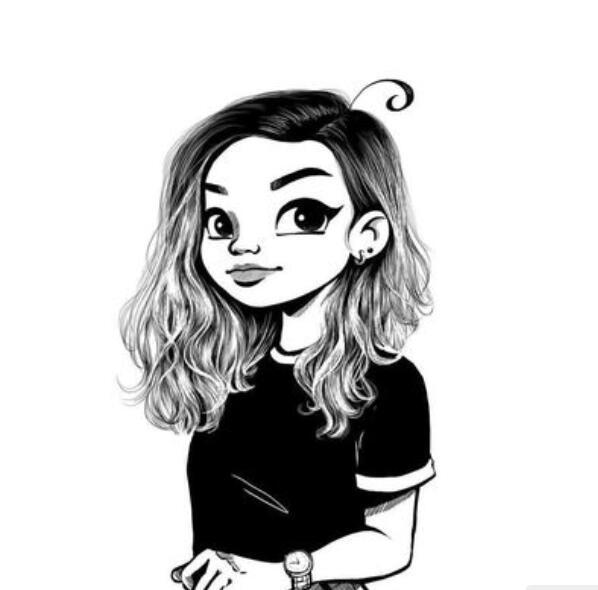
For Anne Gregory Poem Introduction
Through his poem, W.B. Yeats attempted to address a very important issue. He claims that it is nearly impossible to find someone who truly loves you in your life. By truly, he refers to the person who loves you for your qualities rather than your appearance. Only God, he claims, loves us for who we are on the inside.
For Anne Gregory Poem Summary
The poem is essentially a dialogue between Yeats and a young girl named Anne Gregory. The poet tells her that if she finds a young boy who becomes depressed as a result of her rejection, he was not a true lover. He might have fallen in love with her because of her lovely yellow hair. This implies that the boy may be in love with her because of her attractive appearance. He claims that a true lover will love her for her inner qualities rather than her appearance. Anne responds by saying she will change her appearance by dying her hair a different colour. She will lose her attractiveness and, perhaps, find true love for herself. Finally, he tells her that the night before, he overheard a religious man say that only God loves us for who we are. This means that God never loves us for our outward appearance, but rather for our inner beauty.
For Anne Gregory Poem Explanation
“Never shall a young man,
Thrown into despair
By those great honey-coloured
Ramparts at your ear,
Love you for yourself alone
And not your yellow hair.”
- Despair: sadness
- Ramparts: The high, wide walls around a castle or fort, for example, the ramparts of the Red Fort
This poem is a dialogue between the poet and a young woman named Anne Gregory. The poet tells the girl that if she rejects a young man, he will become hopeless. However, this does not imply that he had genuine feelings for you. He fell in love with you because you have beautiful hair. The girl has stunning hair. They fall on her ears and appear to protect them in the same way that a boundary wall protects the fort. So, the poet is pointing out a reality that many people face during their youth: they are liked by the opposite gender because of their appearance rather than their inner beauty.
Literary Devices
- Rhyme Scheme: abcbdb
- Metaphor: honey-coloured Ramparts at your ear (Anne’s hair is compared to the ramparts of a fort)
“But I can get a hair-dye
And set such colour there,
Brown, or black, or carrot,
That young men in despair
May love me for myself alone
And not my yellow hair.”
Anne responds that she has a good solution to this problem. She can dye her hair black, brown, or carrot because it will no longer make her look less attractive. Then maybe she'll meet a young man who appreciates her inner beauty rather than her outward appearance.
Literary Devices:
- Rhyme Scheme: abcbdb
- Alliteration: repetition of consonant ‘s’ sound at the start of two consecutive words. (Set Such)
“I heard an old religious man
But yesternight declare
That he had found a text to prove
That only God, my dear,
Could love you for yourself alone
And not your yellow hair.”
- Yesternight: the previous night
After hearing Anne Gregory, the poet claims to have overheard an old religious man say that he could prove a fact with a text from a religious book. The truth is that only God loves us for who we are, not how we look. He adores us because of our inner qualities. Only God is capable of such feats.
Literary Devices:
- Rhyme Scheme: abcbdb
- Anaphora: Repeated use of a word at the beginning of two lines (That he….That only god)
- Alliteration: he had, your yellow
About the Author
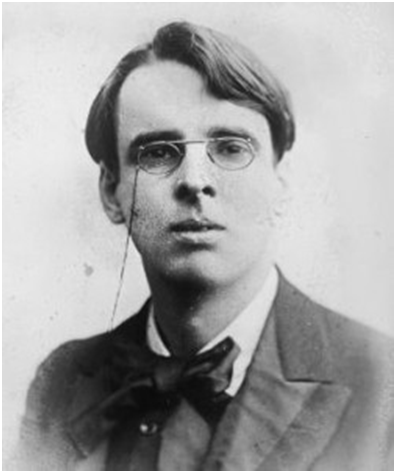
William Butler Yeats was an Irish nationalist who lived from 1865 to 1939. He received his education in London and Dublin and was interested in folklore and mythology. In 1923, he was awarded the Nobel Prize in Literature.

 ACERISE INDIA
ACERISE INDIA
 Online English tutor
Online English tutor
